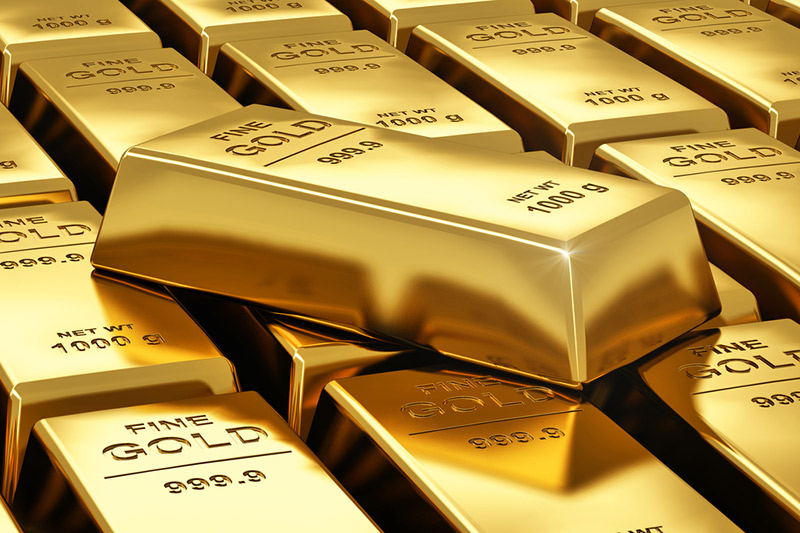Investing.com - Gold prices dipped in early Asian trading Thursday, extending losses in U.S. and European sessions as investors sold and jumped to the sidelines and bought dollars while waiting for a clear weather vane to serve as guidance for the yellow metal, despite talk of monetary easing in Europe.
Tepid manufacturing data out of Europe sparked talk of monetary stimulus, which is normally bullish for gold, although weak physical demand coupled with sentiment the U.S. remains opposed to easing lead to a wait-and-see approach in early Asian trading.
On the Comex division of the New York Mercantile Exchange, gold futures for June delivery traded down 0.08% at USD1,652.65 a troy ounce.
Gold traded at a low of USD1,651.85 a troy ounce and hit a high of USD1,654.75 a troy ounce during the session.
The precious metal sought to test support at USD1,646.75 a troy ounce, the low of May 2, and resistance at USD1,672.15, the high on May 1.
In Europe, a eurozone manufacturing purchasing managers’ index fell to a 34-month low of 45.9 in April, down from 47.7 in March and missing estimates of 46.0.
Factory output in Europe's largest economy, Germany, was off as well, with its manufacturing PMI dropping to 46.2 in April from 46.4 in March and below market estimates for 46.3.
Meanwhile in the U.S., payroll processer ADP said that private-sector, non-farm employment rose by 119,000 in April, the lowest gain since last September, after a 201,000 rise in March.
Analysts were hoping to see a figure around 178,000 in April.
With unemployment rates elevated across Europe, talk the European Central Bank may consider stimulating the economy via monetary easing sought to push gold higher, the normal scenario under when talk of easing arises.
However, weak physical demand and growing sentiment that the Federal Reserve is less likely to intervene in the economy despite the lackluster ADP figure sent investors running to the dollar instead, which sent gold falling.
Elsewhere on the Comex, silver for July delivery was down 0.04% and trading at USD30.633 a troy ounce, while copper for July delivery was up 0.06% and trading at USD3.785 a pound.
Tepid manufacturing data out of Europe sparked talk of monetary stimulus, which is normally bullish for gold, although weak physical demand coupled with sentiment the U.S. remains opposed to easing lead to a wait-and-see approach in early Asian trading.
On the Comex division of the New York Mercantile Exchange, gold futures for June delivery traded down 0.08% at USD1,652.65 a troy ounce.
Gold traded at a low of USD1,651.85 a troy ounce and hit a high of USD1,654.75 a troy ounce during the session.
The precious metal sought to test support at USD1,646.75 a troy ounce, the low of May 2, and resistance at USD1,672.15, the high on May 1.
In Europe, a eurozone manufacturing purchasing managers’ index fell to a 34-month low of 45.9 in April, down from 47.7 in March and missing estimates of 46.0.
Factory output in Europe's largest economy, Germany, was off as well, with its manufacturing PMI dropping to 46.2 in April from 46.4 in March and below market estimates for 46.3.
Meanwhile in the U.S., payroll processer ADP said that private-sector, non-farm employment rose by 119,000 in April, the lowest gain since last September, after a 201,000 rise in March.
Analysts were hoping to see a figure around 178,000 in April.
With unemployment rates elevated across Europe, talk the European Central Bank may consider stimulating the economy via monetary easing sought to push gold higher, the normal scenario under when talk of easing arises.
However, weak physical demand and growing sentiment that the Federal Reserve is less likely to intervene in the economy despite the lackluster ADP figure sent investors running to the dollar instead, which sent gold falling.
Elsewhere on the Comex, silver for July delivery was down 0.04% and trading at USD30.633 a troy ounce, while copper for July delivery was up 0.06% and trading at USD3.785 a pound.
